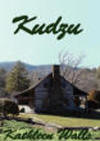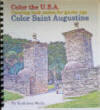Getting Hand to Paw with Wolves
Story and photos by Kathleen Walls
Little Red Riding Hood lied. She caused
generations to see wolves as evil creatures, intent on eating
people. I recently visited
Seacrest Wolf Preserve located in
Chipley, Florida. Cynthia and Wayne Watkins founded it in 1999
as a sanctuary for displaced captive wolves. Seacrest is one of
the few preserves in the country that allow up close encounters
with wolves.
I have visited many zoos where I could
admire these majestic animals with bars between us, but this
was my first time entering their space and meeting them hand to
paw. I was slightly nervous. Lindsey Banks, Director at
Seacrest. Prepared me for our meeting. She explained I would
meet a pack of North American Gray Wolves, also called Timber
Wolves. The alpha wolf was Pawnee, and brother and sister pair
were named Dreamer and Iasha. These are ambassador wolves. She
said, “Most ambassador wolves are born here so they can be
socialized early. They are still wild animals, not pets.”
She explained the socialization process.
It begins when the cubs are about ten days old. Staff go in and
handle them regularly, so they become used to people.
Currently, the preserve has about a dozen ambassador wolves to
help teach visitors about their species. Lindsey explained,
“Each species has a role to play. When you take one species out
of the system, you’re sentencing your ecosystem to death.”
“Wolves have unique personalities, just
like people,” she explained. “Wolves have a social dynamic
similar to our own. Wolves will mourn themselves to death if
they are alone for long periods of time.”
When I entered the enclosure, I understood
the uniqueness. Each greeted me in their own way. Pawnee, as
befitted the leader, was more aloof. He wanted to lick my hair
and allowed a brief petting. When I reached into Pawnee’s fur,
it surprised me how dense it was compared to my former doggie
friends. I also noticed how much larger their paws were
compared to their size. Another thing I soon became accustomed
to was instead of licking your hand when they wanted to check
you out like dogs do, the wolves wanted to lick my face. It was
a little scary. Have you ever had a wolf’s sharp teeth and open
mouth inches from your face?
Iasha was very friendly and wanted to
touch noses and lick my chin. She let me pet her shoulders and
back and loved having her rump rubbed. She gave out a classic
wolf howl when I ran my fingers through her thick fur just
above her tail.
Dreamer
was the most individual in the group. One of Dreamer’s quirks
was, he liked to have his armpit scratched. He let me know,
almost as if he were talking. He stood next to me and raised
his left paw to shoulder height, turned his head to meet my
eyes, and gave me a look that said. “Rub here. Now.” Of course,
I did, and he closed his eyes as if to tell me “That’s just the
right spot.”
This was one of the most amazing
experiences I have ever had. It was almost as if these wolves
were as curious and wanting to learn about me as I was about
them.
It’s frightening to think these amazing,
highly intelligent animals are so close to extinction. In
January 2021, wolves were removed from the Endangered Species
List protections, and their management placed in the hands of
individual states. Some small protection was returned in 2022
but many states have worked to remove any remaining protection
from America's wild wolves. So many especially western states
want to vilify them and kill off entire packs.
The attempt to make wolves appear
dangerous is just a falsehood. Naturally, they are wild animals
and if they feel threatened, they can attack. However, normally
wolves try to avoid humans. Records show over the last 75
years, wolves have killed only two humans in North America.
Lindsey
told me the preserve currently has 22 wolves and some other
small native species, including foxes, raccoons, skunks, and a
pair of coyotes, Pecos and Wiggles. Wiggles, the female, had
just come to them from the neighboring Orange Hill Gator Farm.
Lindsey laughed and said, “Pecos doesn’t want me to pet
Wiggles. He thinks I am his person.”
Presently, because of Covid, the preserve
is only doing Personal VIP Tours. Lindsey said hopefully after
Covid they will go back to doing the VIP Tours Monday through
Friday, and have the Public Tours, which include seeing these
other animals, on Saturday. Now if someone wanted to see the
other mammals on a VIP Tour, they could take about 20 minutes
off the wolf encounter and see the other animals.
Lindsey explained Seacrest’s mission.
“Seacrest wants to build a bridge of understanding between
humans and native wild species. We believe in preservation
through education. We offer a rare opportunity to come in and
meet a wolf hands on. We hope this gives a better understanding
of what the wolf truly is. He did not huff and puff and blow
the little pigs’ houses down and he did not eat grandma. He
didn’t steal her identity.”































